 Most viewed Most viewed |

Hawai Onsen got its start in 1843 when local fishermen noticed warm spring water gushing out the lake bottom. The local Tottori lord gave them permission to utilize the hot spring water to make it easier to boil water, etc. 25 views
|
|

Sennentei had a nice New Year's decoration with kadomatsu and tanuki. 千年亭25 views
|
|

25 views
|
|
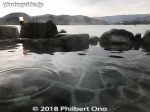
Men's outdoor bath at Sennentei. Nice view of the lake. Hawai Onsen, Tottori. 千年亭25 views
|
|

This onsen had several name changes. In 1927, "Asozu Onsen" was renamed "Shin-Togo Onsen" (新東郷温泉). In 1978, it was renamed "Hawai Onsen" (羽合温泉). 25 viewsIn 1998, they changed the Japanese name to はわい温泉 replacing the "hawai" kanji with hiragana.
|
|

Inside the Gift shop.25 views
|
|

Adachi Museum of Art garden.25 views
|
|

Natural scroll next to a Buddhist altar.25 views
|
|

Adachi Museum of Art garden, Shimane Prefecture.25 views
|
|

Sculpture at Adachi Museum of Art garden, Shimane Prefecture.25 views
|
|

JR Yasugi Station welcomes visitors to the land of Yasugi-bushi.25 views
|
|

Playing the tsuzumi shoulder drum.25 views
|
|

The most famous Yasugi-bushi song is "Dojo-sukui" (Loach Scooping) danced by a Hyottoko comical man. The dancer uses a basket scoop to catch the loaches.25 views
|
|

25 views
|
|

25 views
|
|

Names of the performers from the Yasugi-bushi Preservation Society.25 views
|
|

Mother's Day photo shoot event at Mitsukoshi Dept. Store.25 views
|
|

25 views
|
|

25 views
|
|

25 views
|
|

Site of the old Hankyu Dept. Store in Yurakucho.25 views
|
|

One of the main streets of Misasa Onsen.25 views
|
|

25 views
|
|

25 views
|
|

25 views
|
|

25 views
|
|

Restaurant on the Main Deck.25 views
|
|
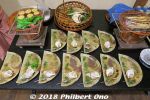
25 views
|
|

Block 6 has this small entrance to the restaurant section.25 views
|
|

Long lines everywhere for sushi. The restaurants usually sell out by 2 pm, then they close. 25 viewsThe huge crowd is either here for the novelty of a new attraction or they may be a strong sign of Toyosu Market's massive popularity.
I'm afraid the Tsukiji Outer Market will soon be marginalized by Toyosu Market. The market is the heart and soul, and it's now in Toyosu. The fishmongers in Toyosu are very gung-ho now and really want the Toyosu brand to exceed the old Tsukiji brand.
|
|
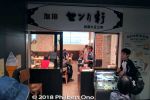
Only this coffee shop was not crowded. So we gave up having a sushi lunch at Toyosu Market. 25 viewsThere are plans to build larger restaurant facilities in buildings adjacent to the market. However, they won't open until 2023.
|
|
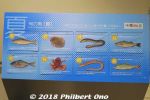
Also in the corridor, bilingual explanatory panels for identifying fish.25 views
|
|
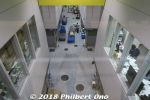
Not much of a view though.25 views
|
|
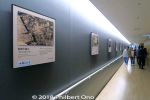
Corridor wall also had panels explaining the history of the food and vegetable market in Tokyo.25 views
|
|

Patient people.25 views
|
|

PR for National Sports Festival of Japan to be held in Shiga in 2024.25 views
|
|

Abebe Bikila, the legendary marathon gold medalist of the 1964 Tokyo Olympic Games, ran and won the marathon in Shiga in 1965.25 views
|
|

25 views
|
|

25 views
|
|
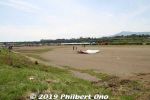
Zama Giant Kite Odako Festival is held annually on May 4 and 5 along the Sagami River from 10 am to 4 pm. They fly the giant kite a few times each day depending on the wind. 25 viewsNearest train station is Sobudaimae Station on the Odakyu Line. They have shuttle buses between the train station and festival site.
|
|
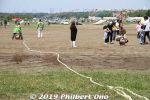
25 views
|
|
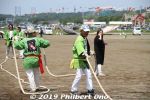
25 views
|
|
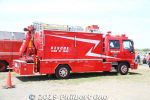
25 views
|
|
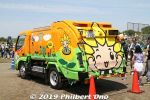
25 views
|
|
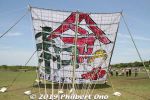
25 views
|
|
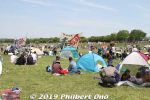
25 views
|
|
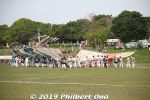
25 views
|
|
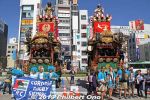
Two Kumagaya Uchiwa Matsuri floats were parked outside JR Kumagaya Station to delight rugby spectators. Kumagaya Uchiwa Matsuri is held in July with 12 ornate floats with musicians.25 views
|
|
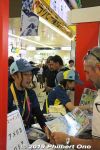
Volunteers at Kumagaya Station give local information to foreign visitors.25 views
|
|
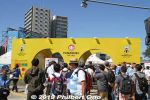
Kumagaya rugby fan zone entrance. 10-min. walk from the station.25 views
|
|
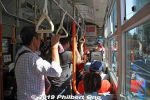
Inside the shuttle bus.25 views
|
|
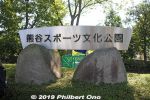
Kumagaya Sports and Culture Park25 views
|
|

25 views
|
|
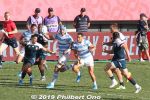
25 views
|
|
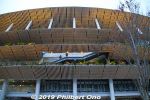
The stadium's design theme was "Forest Stadium." (杜のスタジアム). 25 viewsLots of cedar lumber on the exterior. The wood came from all 47 prefectures and they point toward the place where they came from.
|
|
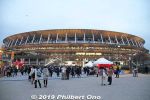
The stadium as seen from Gaien Gate. This area is where they had food stalls and corporate sponsor booths.25 views
|
|
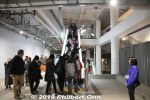
Escalator to the upper floors.25 views
|
|
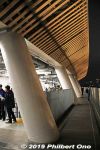
Outside the concourse. 25 views
|
|
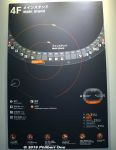
Layout of seating blocks on the Main Stand on the 4th floor (Tier 3). Notice the many concession stands and restrooms. 25 viewsIt may be confusing to see three seating tiers, but they are on different floors. The 1st tier is on the 1st floor, the 2nd tier is on the 2nd and 3rd floors, and the 3rd tier is on the 4th and 5th floors.
|
|

Narrow corridor to Blocks 307 and 308 on tier 3. No wheelchair seating here. 25 views
|
|
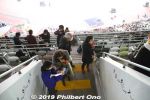
At the end of the corridor is steps going down and up. Cramped spot where people tend to stop and try to figure out which way to go. 25 viewsIf your seat is on the other side of the block, you should go back to the concourse and enter the corridor on the other side of the block.
|
|
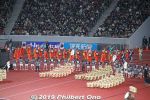
Next was the Morioka Sansa Odori dance festival from Morioka, Iwate Prefecture. 25 viewsIt's a large-sacle evening street dance held near JR Morioka Station on Aug. 1 to 4. 盛岡さんさ踊り http://www.sansaodori.jp/foreign/english.php
|
|
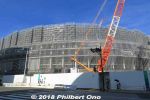
25 views
|
|

Layout of the North Stand which was the Vissel Kobe fan section.25 views
|
|
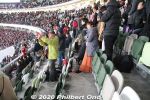
When people are sitting, there's very little room to pass through a row of seats.25 views
|
|

Vissel Kobe fans on the North Stand. Loud cheers. The roof overhead carried their cheers very well.25 views
|
|

Vissel Kobe fans on the North Stand. 25 views
|
|
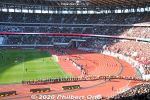
Vissel Kobe fans on the North Stand. 25 views
|
|

25 views
|
|
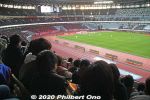
On Tier 2, view from the Back Stand, Block 241, nearer to the North Stand.25 views
|
|

This football/soccer match was also an Olympic test event for the new Olymoic Stadium and officials observed the crowd flow.25 views
|
|
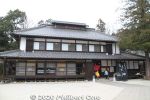
Benibana Furusato-kan Hall (べに花ふるさと館) in Okegawa is mainly a restaurant. It was originally a late 19th century home of an industrialist. It also offers udon-making lessons. From JR Okegawa Station, take the bus and get off at "Beniban25 views"Benibana" means safflower.
|
|
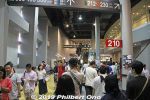
Corridor in Saitama Super Arena. 25 views
|
|
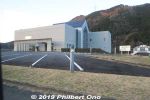
Mino Washi Museum has exhibits about washi history, washi making, and washi paper art. It also offers washi paper-making lessons. Make your own washi postcards, etc. Anybody can do it. 25 viewsOpen 9 a.m.–5 p.m., closed Tue. Admission ¥500 (¥250 for elementary school and jr. high school). From Mino-shi Station, take a taxi. The museum is far from the train station because it needs to be near a clean river. Parking available.
|
|
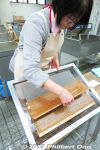
Transferring the paper sheet.25 views
|
|
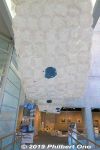
25 views
|
|

More names of pilgrims.25 views
|
|
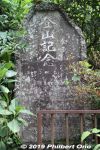
Pilgrimage monument.25 views
|
|
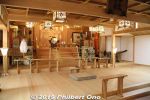
25 views
|
|
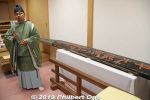
Oyama Afuri Shrine priest Kunihiko Meguro showed us a large wooden sword that was offered by a pilgrimage group.25 views
|
|
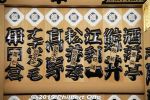
Names of worshippers who had tattoos. Their names also have labels describing their tattoos for ID purposes.25 views
|
|
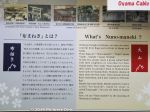
About Nuno-maneki banners.25 views
|
|
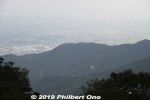
25 views
|
|
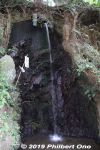
Roben Falls. During the Edo Period, pilgrims would bathe under these falls for purification. Roben Falls was made famous by woodblock prints showing tattooed pilgrims bathing here. 良弁滝25 views
|
|

About Roben Falls where ascetic Buddhist Priest Roben first bathed and founded Oyama-dera Temple in 755. Roben also had a hand in founding the famous Todaiji Temple in Nara that houses the giant Buddha and Ishiyama-dera Temple in Otsu, Shiga..25 views
|
|
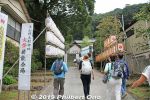
Way to Oyama Afuri Shrine's Noh stage at the Shamukyoku shrine office. 社務局25 views
|
|
|
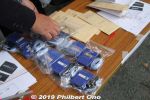
Audio guide for English interpreting.25 views
|
|
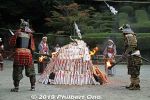
They lit the bon fire made of prayer tablets. This was the fire festival (火祭) part of the event.25 views
|
|
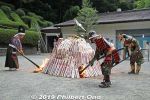
25 views
|
|

For Oyama Afuri Shrine's 39th Fire Festival Takigi Noh on Oct. 3, 2019, a Kyogen play called "Neongyoku" and Noh play called "Momojigari" were performed.25 viewsPerformers were top class from the Kanze School of Noh and the Okura School of Kyogen. Sorry, but photography of the performances wasn't allowed so I don't have photos of the performances. Many thanks to Alice Gordenker who organized the tour and provided English explanations.
|
|

Dancers called Maibito (舞人).25 views
|
|

Myobu (命婦) getting off the Seiden.25 views
|
|

High-ranking court ladies called Uneme (釆女) chosen from an aristocratic family. They were in charge of food and drink for the princess. They give an iris flower offering.25 views
|
|

Top-ranking court ladies called the Naishi (内侍) working at the Saiku Palace.25 views
|
|

Saio Matsuri Departure Ceremony at Seiden Hall, Saiku Heian-no-mori Park. 正殿25 views
|
|

After the Departure Ceremony, the Saio exits showing her long, flowing black hair.25 views
|
|

Until the 19th century, wild irises grew extensively in Saiku's natural wetlands. 25 viewsA National Natural Monument, Saiku/Ise irises are one of Japan's few natural iris strains from which hybrids were created. Wetlands have been recreated in Saiku to grow irises.
|
|

On Nov. 3, 1968, Ise Jingu Shrine erected this stone monument in the Saio Woods to indicate that the Saiku Palace was located in this area.25 views斎王の森
|
|

About the Saio Woods.25 views
|
|

Ladies wearing a red band across their shoulders are court ladies called Nyoju (女嬬). 25 views
|
|
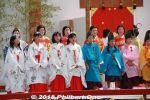
Girls called Warawame (童女). They are children of the Imperial family or nobility and are learning the customs of the Saiku while living in the Saiku Palace. 25 views
|
|

On this outdoor stage, they were to hold the Shato-no-Gi welcome ceremony at 2:50 pm when head honchos give speeches. 社頭の儀. This is the Saikuryo Government Director General. 斎宮寮長官25 views
|
|
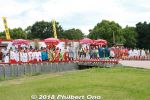
Everyone arrived here and the ceremony started with a few speeches.25 views
|
|
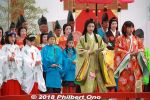
In green, Nyo-betto and the Child Saio princess.25 views
|
|
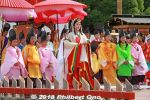
Saio posing with Warawame (童女) dressed in Heian-Period suikan costume. 水干25 views
|
|
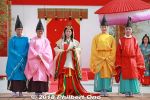
Posing with dancers called Maibito (舞人).25 views
|
|

Saiku government officials. 斎宮十二司官人25 views
|
|
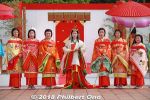
Posing with court ladies called Nyoju (女嬬) who serve in the inner palace (後宮) and take care of the Saio princess' daily living.25 views
|
|
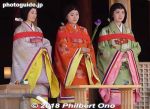
Iris flower offerings followed. Leading court ladies called the Myobu (命婦), assistants who tend to the immediate needs of the Saio princess. 献花の儀式25 views
|
|

25 views
|
|

Old coins and dishes/pottery.25 views
|
|

Traditional buildings that still remain in Seki-juku.25 views
|
|

25 views
|
|

Jizo-in Temple, Main Hall is an Important Cultural Property. 地蔵院25 views
|
|

Kameyama Castle's Tamon-yagura turret.25 views
|
|

Next to the castle is a stone monument marking the birthplace of Iinuma Yokusai (1782–1865), a Japanese botanist and physician. 飯沼慾斎25 views
|
|

Kameyama Castle's Tamon-yagura turret in autumn. 多聞櫓25 views
|
|

Kameyama Castle's Tamon-yagura turret. 多聞櫓25 views
|
|

25 views
|
|

Steps to Kameyama Castle's Tamon-yagura turret. It was renovated in 2012. 多聞櫓25 views
|
|
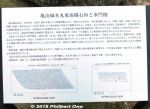
Stone wall design under Tamon-yagura turret. 25 views
|
|

Tamon-yagura turret.25 views
|
|

Ninomaru fringe.25 views
|
|

25 views
|
|

JR Kameyama Station (Kansai Line).25 views
|
|

In front of JR Kameyama Station.25 views
|
|

In Anamizu and Nanao Bay, it was common to see these little watchtowers called "bora-machi yagura" or mullet fishing tower (ボラ待ちやぐら). An ancient fishing method to catch mullet.25 viewsThere's a fishing net laid on the bottom of the shallow water. A fisherman sits on the tower and watches for mullet swimming over the fishing net. He then pulls up the net.
|
|

In Hakui, Ishikawa, Myojoji Temple's five-story pagoda is a National Important Cultural Property built in 1618. 妙成寺 五重塔25 viewsThe temple was founded in 1293 by Nichizō, a second-generation disciple of Nichiren. Some of the temple structures are National Important Cultural Properties.
|
|

Noto Kongo Coast stretches for 29 km, a scenic part of Noto Peninsula. 能登金剛25 views
|
|

Hatago Iwa wedded rocks are another noted natrual feature on the Noto Kongo Coast. A legend about the Hataori god (機織りの神様) happened here. 機具岩 (Noto Futami)25 views
|
|

Sekinohana 関野鼻25 views
|
|

Gojinjo-Daiko drummers.25 views
|
|

25 views
|
|

25 views
|
|

Volunteers plant and harvest the rice here. The rice paddies are owned by multiple owners who meet ownership requirements. 25 views
|
|

Ōnaruto Bridge was completed in 1985 and stretches for 876 meters (2,874 ft) over the ocean. 大鳴門橋25 views
|
|

Naruto whirlpool25 views
|
|

Myojoji Temple's Main hall25 views写真提供:©石川県観光連盟
|
|

Myojoji Temple in Hakui belongs to the Nichiren Buddhist sect. It is the Nichiren headquarters temple for the Hokuriku Region. 妙成寺Myojoji Temple gate.25 views写真提供:©石川県観光連盟
|
|

Tsukumo Bay is a ria or coastal inlet. Boat cruises are available. 九十九湾25 views写真提供:©石川県観光連盟
|
|
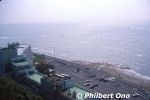
View from Omaezaki Lighthouse looking east.25 views
|
|

View of Seto Inland Sea from Mt. Fudekage in Mihara, Hiroshima.25 views
|
|

25 views
|
|
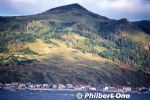
25 views
|
|

On the left is Lake Kushu, and ocean on the right.25 views
|
|

25 views
|
|

25 views
|
|

25 views
|
|

25 views
|
|

25 views
|
|
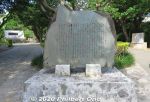
Himeyuri Chronology, inscribed with what happened here.25 views
|
|
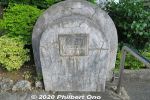
Monument for the land donation.25 views
|
|

Monument for the medical staff who died in the Battle of Okinawa. 25 views
|
|

Wish we could see the Iriomote wildcat swimming across the river, but they are nocturnal.25 views
|
|

Ishigaki Airport 25 views
|
|
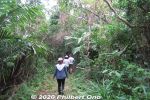
Iriomote has many hiking trails through the tropical forest or jungle. The popular trails usually lead to a waterfall, but we went on a short nature trail in Otomi that didn't lead to anything. 大富林道大正池25 views
|
|
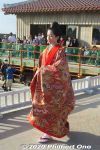
I was there on Nov. 3 and saw the King and Queen posing. They posed behind the Seiden site. In this photo, the rear of the Seiden would be in the background.25 views
|
|
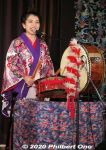
Nakazato Haruhi (仲里はるひ) plays many instruments, centering on the sanshin and taiko drums.25 views
|
|
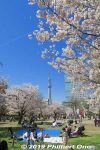
Cherry blossoms in Kinshi Park and Tokyo Skytree.25 views
|
|
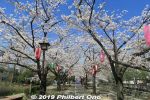
25 views
|
|
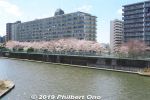
Some cherry blossoms along Kyu-Nakagawa River near Heisei Bridge. 旧中川25 views
|
|
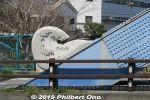
Heisei Bridge photographed in 2019, the last year of the Heisei Period.25 views
|
|
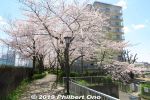
Cherry blossoms along Kyu-Nakagawa River in Koto Ward.25 views
|
|
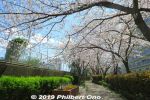
Cherry blossoms along Kyu-Nakagawa River in Koto Ward.25 views
|
|

Kawasaki Daishi Temple, Dai-hondo main worship hall 大本堂25 views
|
|
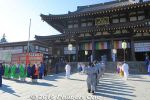
25 views
|
|
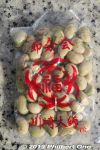
My lucky setsubun beans. It hit my hand in the air and I caught it. I think one of the priests threw it.25 views
|
|
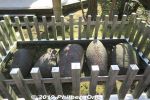
Power stones (chikara-ishi) 力石25 views
|
|

Boar daruma and beckoning maneki-neko cat.25 views
|
|
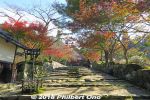
Colorful autumn path to Saimyoji Temple.25 views
|
|
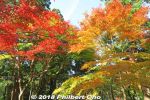
25 views
|
|
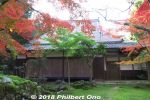
25 views
|
|
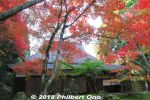
25 views
|
|
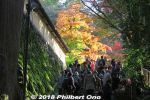
Stairs to autumn heaven. Up to here, the path was just filled with colors. And more still awaited.25 views
|
|
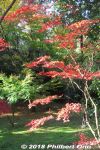
25 views
|
|
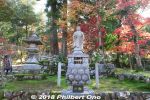
25 views
|
|
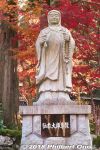
25 views
|
|
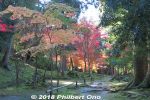
25 views
|
|
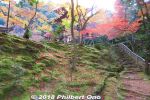
25 views
|
|

Wedded cedar trees.25 views
|
|
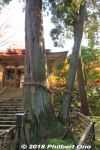
Wedded cedar trees.25 views
|
|
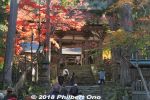
Nitenmon Gate to main temple (Hondo).25 views
|
|
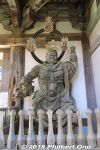
Niten god25 views
|
|
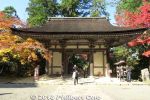
Nitenmon Gate (rear).25 views
|
|
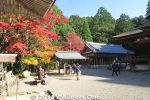
25 views
|
|
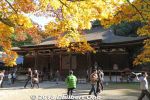
Saimyoji Temple Hondo hall (National Treasure)25 views
|
|
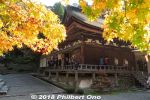
Saimyoji Temple Hondo hall (National Treasure)25 views
|
|
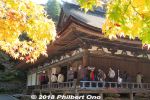
In 1571, Oda Nobunaga ordered Saimyoji to be burned down right after torching Enryakuji on Mt. Hiei. Fortunately, this Kamakura-Period main hall and the pagoda survived. 25 views
|
|
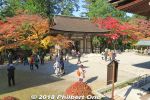
25 views
|
|
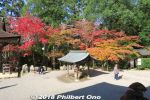
View from Saimyoji Temple Hondo hall (National Treasure).25 views
|
|
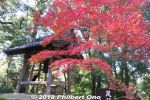
Saimyoji temple bell accented with red maples.25 views
|
|
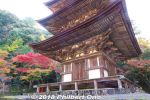
25 views
|
|
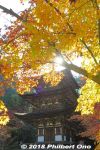
25 views
|
|

25 views
|
|
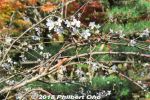
"Ever-blooming" cherry tree (fudan-zakura) in autumn.25 views
|
|
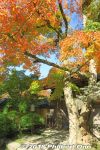
25 views
|
|
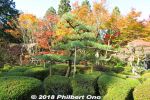
25 views
|
|
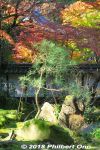
25 views
|
|
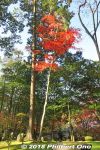
25 views
|
|
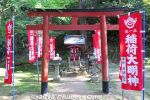
25 views
|
|
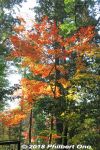
25 views
|
|
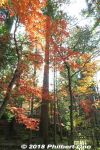
25 views
|
|
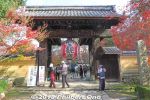
Kongorinji is a Tendai Buddhist temple established in 741 and the middle temple in the Koto Sanzan Temple Trio. The main temple hall is a National Treasure housing an 11-faced Kannon statue and 13 other statues designated as Important Cultural Properties.25 viewsThis is the Somon main gate to the temple. 総門
|
|
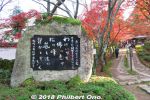
The temple was first built in 741 as ordered by Emperor Shomu. It later became a Tendai Buddhist temple in 850. It is famous for "blood-red" maple leaves in autumn.25 views
|
|
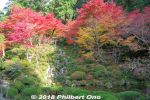
25 views
|
|
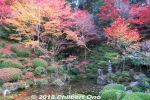
25 views
|
|
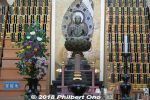
Inside the Jizo-do Hall built in 1997. 地蔵堂25 views
|
|
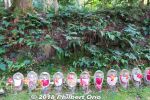
25 views
|
|
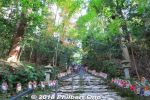
25 views
|
|
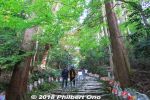
From here, the path to the temple (main hall) is lined with 1,000 Jizo statues.25 views
|
|
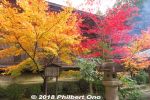
25 views
|
|
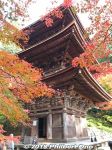
Kongorinji's three-story pagoda built in 1246, National Important Cultural Property.25 views
|
|
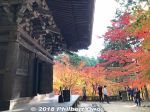
Kongorinji's three-story pagoda, National Important Cultural Property amid maple leaves.25 views
|
|
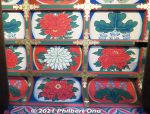
Kannon-do ceiling of painted flowers. Peonies (red), chrysanthemum (white), and paulownia (blue). 牡丹、菊、桐 25 views
|
|
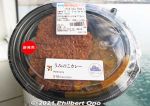
In late Jan. 2021, Uminoko Curry was sold by 7-11 only in Shiga for three weeks. It used the same recipe as the curry served on the Uminoko Floating School.25 views
|
|
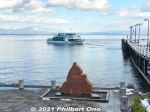
You can also get to Imazu by boat from Chikubushima island. Imazu Port has boats going to/from Chikubushima. On the eastern shore, Nagahama and Hikone have boats going to Chikubushima.25 viewsAt Imazu Port, boat named "Interlaken" operated by Biwako Kisen cruises to/from Chikubushima.
|
|

Inside Interlaken. 25 views
|
|
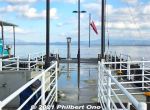
At the end of Imazu Port's dock, the lantern is a song monument for Verse 3 of Biwako Shuko no Uta (Lake Biwa Rowing Song).25 views
|
|
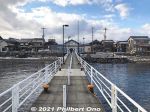
Imazu Port dock to the port building.25 views
|
|
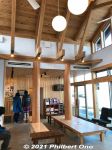
Waiting room inside Imazu Port building.25 views
|
|

Boat ticket office operated by Biwako Kisen.25 views
|
|
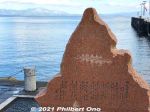
Oguchi Taro was a member of the rowing club at Dai-san High School (now Kyoto University). He composed it in Imazu, Shiga Prefecture during the second night of the trip.25 views
|
|

A few old parts from a lake cruise boat. Compass, lamp, and other things.25 views
|
|
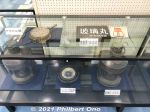
25 views
|
|
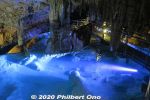
Inside Okinawa World's Gyokusendo Cavern, this is called the Blue Spring. Perhaps the prettiest spot of all. 青の泉25 views
|
|
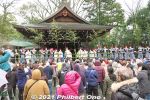
25 views
|
|
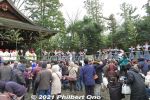
25 views
|
|
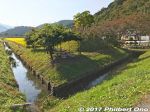
Kashiwabara Ichirizuka distance marker.25 views
|
|
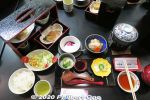
Breakfast at Kinugawa Park Hotels in Kinugawa Onsen, Tochigi.25 views
|
|
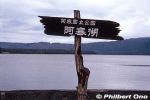
Part of Akan-Mashu National Park, Lake Akan (Akanko) is a serene crater lake in Hokkaido. In winter, the entire lake freezes over to enable ice skating and other winter sports. Winter festival is also held.25 views
|
|
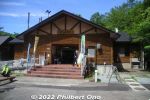
Mori-no-Bussan Kyororo (森の物産館キョロロ) is where we got off the tour bus. This is a local gift shop selling local produce and snacks. Restrooms and rest house too. We walked to the ponds from here.25 views
|
|
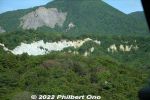
From the road going to/from Juniko Lakes, part of Nihon Canyon with white cliffs can be seen. It was formed by erosion and collapsed mountainsides. 日本キャニオン25 views
|
|
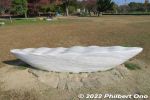
This side of the monument faces the lake. It's a popular bench to sit on during weekends and holidays.25 views
|
|
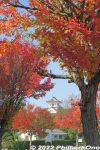
25 views
|
|
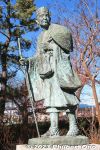
Statue of Matsuo Basho at the southern end of Soka-Matsubara, Saitama. Depicts him looking at his well-wishers in Tokyo (Edo) as he departed for his Oku-no-Hosomichi trip. 25 views
|
|
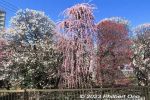
Plum trees on left side are tall trees, with the one in the middle being weeping plum blossom tree at Omurai Katori Shrine in Sumida, Tokyo.25 views
|
|
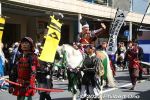
The fifth Odawara Castle Hojo lord, Hojo Ujinao played by Yanagisawa Shingo. 五代氏直 (柳沢慎吾)25 views
|
|
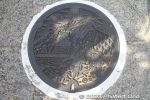
Odawara manhole with Odawara Castle.25 views
|
|
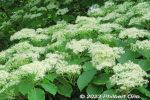
Giant dogwood flowers. ミズキ(Mizuki)25 views
|
|
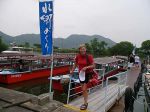
Leaving the Scenic Water Channel boat pier.24 views
|
|
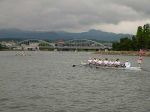
Heading Seta River marked by a series of bridges.24 views
|
|
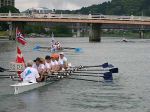
The original Seta-no-Karahashi Bridge was one of the Omi Hakkei (Eight Views of Omi) made famous by Hiroshige's woodblock prints. (Omi is Shiga's old name.)24 views
|
|

24 views
|
|

Later in the evening (still June 11, 2011), a Farewell party was held at Seta Rowing Club. I attended and took these pictures and videos.24 views
|
|

The life-size Godzilla head on Hotel Gracery's rooftop in Kabukicho, Shinjuku.24 views
|
|

Godzilla's claw on the roof edge.24 views
|
|

Entering Hagi Castle grounds.24 views
|
|

24 views
|
|

Tenjuin Mausoleum24 views
|
|

24 views
|
|

The Sankin Kotai route the Mori clan took to visit Edo.24 views
|
|
| 71441 files on 284 page(s) |
 |
 |
251 |  |
 |
|